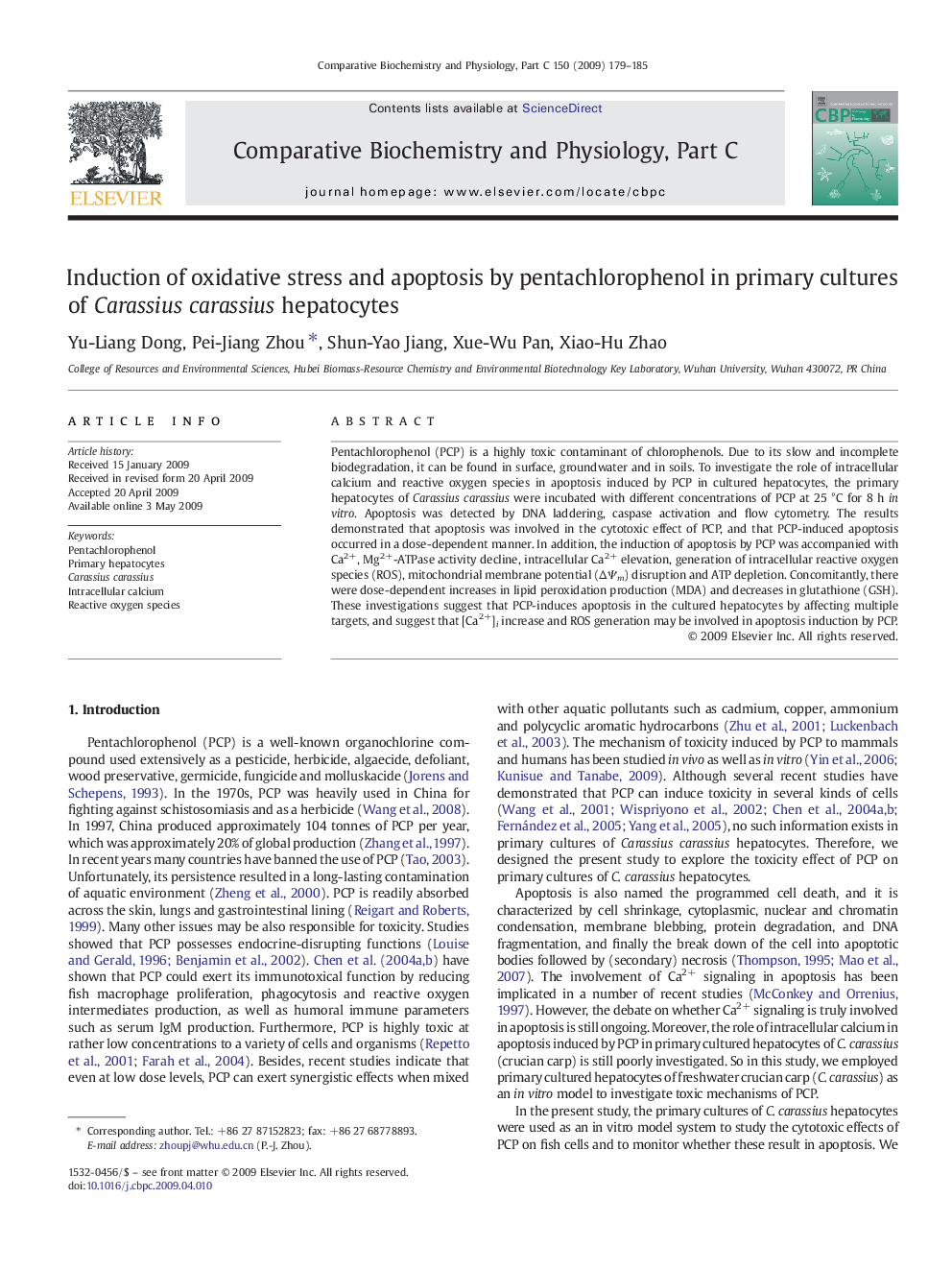| Article ID | Journal | Published Year | Pages | File Type |
|---|---|---|---|---|
| 1977879 | Comparative Biochemistry and Physiology Part C: Toxicology & Pharmacology | 2009 | 7 Pages |
Pentachlorophenol (PCP) is a highly toxic contaminant of chlorophenols. Due to its slow and incomplete biodegradation, it can be found in surface, groundwater and in soils. To investigate the role of intracellular calcium and reactive oxygen species in apoptosis induced by PCP in cultured hepatocytes, the primary hepatocytes of Carassius carassius were incubated with different concentrations of PCP at 25 °C for 8 h in vitro. Apoptosis was detected by DNA laddering, caspase activation and flow cytometry. The results demonstrated that apoptosis was involved in the cytotoxic effect of PCP, and that PCP-induced apoptosis occurred in a dose-dependent manner. In addition, the induction of apoptosis by PCP was accompanied with Ca2+, Mg2+-ATPase activity decline, intracellular Ca2+ elevation, generation of intracellular reactive oxygen species (ROS), mitochondrial membrane potential (ΔΨm) disruption and ATP depletion. Concomitantly, there were dose-dependent increases in lipid peroxidation production (MDA) and decreases in glutathione (GSH). These investigations suggest that PCP-induces apoptosis in the cultured hepatocytes by affecting multiple targets, and suggest that [Ca2+]i increase and ROS generation may be involved in apoptosis induction by PCP.
